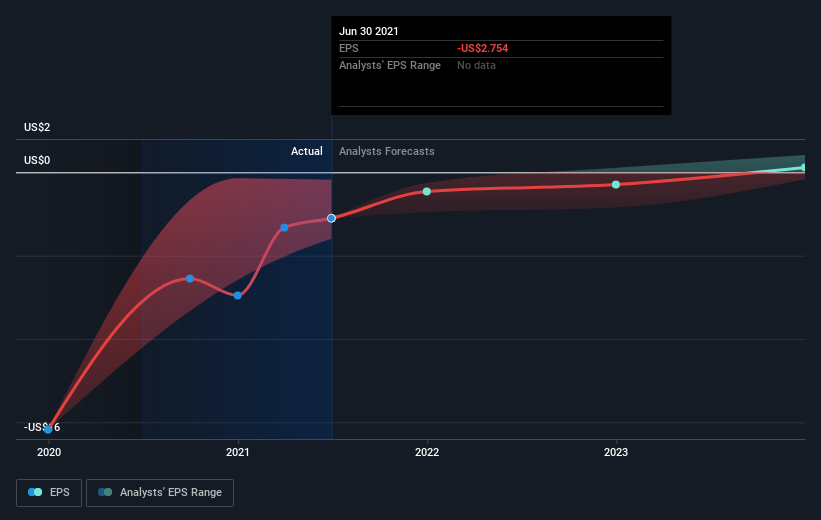DoorDash, Inc. (NYSE:DASH): Is Breakeven Near?
DoorDash, Inc. (NYSE:DASH) is possibly approaching a major achievement in its business, so we would like to shine some light on the company. DoorDash, Inc. operates a logistics platform that connects merchants, consumers, and dashers in the United States and internationally. The company’s loss has recently broadened since it announced a US$461m loss in the full financial year, compared to the latest trailing-twelve-month loss of US$567m, moving it further away from breakeven. The most pressing concern for investors is DoorDash's path to profitability – when will it breakeven? Below we will provide a high-level summary of the industry analysts’ expectations for the company.
View our latest analysis for DoorDash
Consensus from 22 of the American Online Retail analysts is that DoorDash is on the verge of breakeven. They expect the company to post a final loss in 2022, before turning a profit of US$112m in 2023. The company is therefore projected to breakeven around 2 years from now. How fast will the company have to grow each year in order to reach the breakeven point by 2023? Working backwards from analyst estimates, it turns out that they expect the company to grow 69% year-on-year, on average, which is extremely buoyant. If this rate turns out to be too aggressive, the company may become profitable much later than analysts predict.
Underlying developments driving DoorDash's growth isn’t the focus of this broad overview, though, keep in mind that generally a high growth rate is not out of the ordinary, particularly when a company is in a period of investment.
One thing we’d like to point out is that DoorDash has no debt on its balance sheet, which is quite unusual for a cash-burning growth company, which usually has a high level of debt relative to its equity. This means that the company has been operating purely on its equity investment and has no debt burden. This aspect reduces the risk around investing in the loss-making company.
Next Steps:
There are too many aspects of DoorDash to cover in one brief article, but the key fundamentals for the company can all be found in one place – DoorDash's company page on Simply Wall St. We've also put together a list of relevant aspects you should further examine:
Valuation: What is DoorDash worth today? Has the future growth potential already been factored into the price? The intrinsic value infographic in our free research report helps visualize whether DoorDash is currently mispriced by the market.
Management Team: An experienced management team on the helm increases our confidence in the business – take a look at who sits on DoorDash’s board and the CEO’s background.
Other High-Performing Stocks: Are there other stocks that provide better prospects with proven track records? Explore our free list of these great stocks here.
This article by Simply Wall St is general in nature. We provide commentary based on historical data and analyst forecasts only using an unbiased methodology and our articles are not intended to be financial advice. It does not constitute a recommendation to buy or sell any stock, and does not take account of your objectives, or your financial situation. We aim to bring you long-term focused analysis driven by fundamental data. Note that our analysis may not factor in the latest price-sensitive company announcements or qualitative material. Simply Wall St has no position in any stocks mentioned.
Have feedback on this article? Concerned about the content? Get in touch with us directly. Alternatively, email editorial-team (at) simplywallst.com.

 Yahoo Finance
Yahoo Finance 
